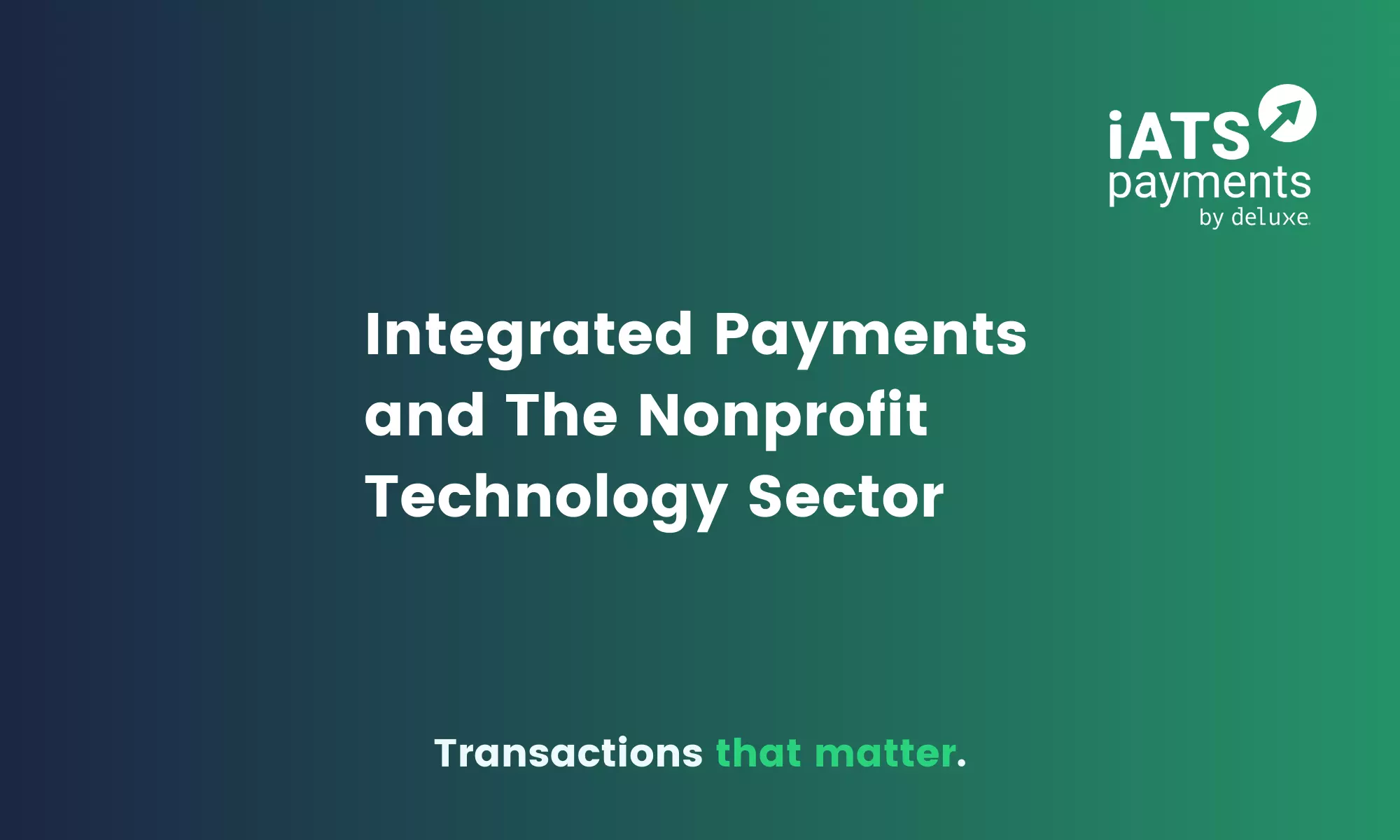In the months leading up to the recent announcement of our parent company’s acquisition, I’ve spent quite a bit of time sharing information about the nonprofit sector, the technology and payments landscape that exists within it, and explaining why iATS Payments by Deluxe® continues to see success even in an increasingly crowded and competitive market.
Integrated payments is a hot topic in general at the moment. Technology providers and their investors are excited about its potential, and payment companies are working hard to package and present a silver bullet, one size fits all solution that caters to that demand. However, to understand the real value that integrated payments brings to the nonprofit sector specifically, we need to go back a few years.
When I first started working as a solutions provider to the nonprofit sector 20 years ago, there weren't that many of us. It was a market that was mostly overlooked, perceived to be small, challenging and with few opportunities to exit.
The landscape of technology providers then vs now is quite different. The market is now extremely active; with established for-profit technology firms launching nonprofit solutions (Salesforce, Microsoft) and startups launching new nonprofit designed products almost every month. This is of course great news for nonprofits who benefit from a broader choice of solutions to help them achieve their mission.
However, the fundamentals of the market have not changed for technology providers. It is still a relatively contained vertical, with only a small percentage of the millions of nonprofits raising over $250k. Buying cycles are long, and cost is still a critical factor when choosing technology solutions. At the same time, the health of the sector depends on investment in this area, with last year demonstrating how the shift to digital fundraising technologies will be critical to a nonprofits future success.
How can technology companies continue to provide ever-increasing value to their nonprofit customers, grow revenues and address the price sensitivity that exists in the sector?
The processing of donations is fundamental to the activities of most nonprofits and one for which they are probably already overpaying. Integrated payments provide a core solution that supports both sides of this business partnership. It can create a meaningful revenue stream for technology providers and if done correctly, will enhance the nonprofits experience by reducing reconciliation issues, eradicating manual processes, and generating financial savings.
iATS has led the market in integrated payments in the nonprofit space since those early days. We remain one of the only payment providers devoted to the nonprofit sector and the only one doing so predominantly through technology partnerships. With more than 15,000 nonprofit customers and over 100 technology partners; our whole company and offering has been structured to serve this one market specifically.
Why?
If we have learned anything in the 20+ years we’ve been in the sector, it’s that technology providers who approach payments like a commodity do not extract the greatest value from it, and neither do their customers.
The most successful partnerships are built on the premise of mutual benefit. In our world that means that the technology provider generates higher revenues, lowers costs and increases CSAT (reducing customer attrition) and the nonprofit enjoys a better customer experience, a more robust and scalable platform and, of course reduced costs through process efficiencies and financial savings.
This kind of success is usually only achieved when payments are treated as a service, not simply a mechanism to execute a transaction. It comes when a technology and payment company align and integrate their approach, not just their technology, to serve their clients.
This high-touch, tailored approach is one that few payment providers adopt, in favor of a more standardized one that achieves a broader reach across verticals. This works well in the for-profit world where a transaction is compensation for a good or service but not in the nonprofit sector, where it represents so much more.
At a time when the world of payments is becoming increasingly commodified, we still believe there is space and need for a focused and service-driven payment solution, especially in the nonprofit sector. Thankfully, we continue to meet technology partners that share this belief, and are delighted when they decide to work with us as these are the partnerships that will contribute to a healthier and more sustainable sector, and the reason we got into it in the first place.




 Support Center
Support Center